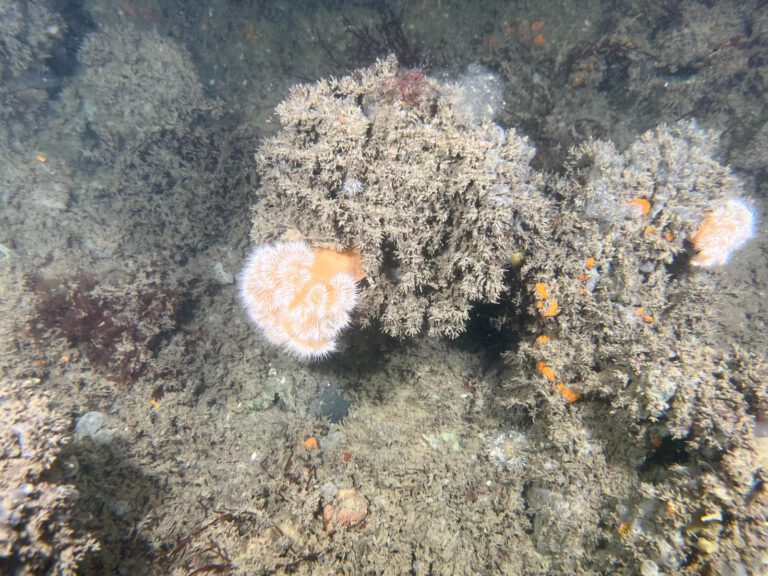Harlequin Slug (Polycera quadrilineata)

Harlequin Slug (Polycera quadrilineata) - Harlekijnslak
- Taxonomy: The Harlequin Slug belongs to the Polyceridae family. Known for its striking appearance, this species stands out due to its bright colors and unique patterns.
- Species: While many sea slugs exist, Polycera quadrilineata is distinct for its vibrant stripes, typically found in the North Atlantic and North Sea regions.
- Reproduction: Like most sea slugs, the Harlequin Slug is hermaphroditic, possessing both male and female reproductive organs. After mating, both individuals lay eggs, which later hatch into larvae.
- Habitat: Often seen in shallow waters, this slug attaches itself to seaweed or rocks. Harlequin Slugs thrive in areas with ample algae growth and clean water, particularly along coastlines.
- Diet: Harlequin Slugs primarily feed on bryozoans (small, colonial animals), and algae, scraping food off surfaces using their radula—a ribbon-like tongue.
- Conservation: Although not endangered, the Harlequin Slug is sensitive to pollution and habitat destruction, particularly in coastal environments.
- Unique Anatomy: Its soft body has vibrant yellow and black stripes, aiding in camouflage and warning predators of its potential toxicity.
- Coloration: Bright yellow and white patterns help deter predators, a typical warning signal in marine life, indicating the slug’s unpalatable nature.
- Lifespan: Typically, they live for one year, during which they reproduce and complete their life cycle.
Harlequin Slugs: Colorful Masters of Disguise
When we think of marine life, iconic species like dolphins, colorful coral, and menacing sharks come to mind. Yet, small creatures like the Harlequin Slug offer just as much beauty and fascination. These tiny, colorful slugs play a unique role in marine ecosystems and are captivating for those who venture into underwater worlds.
What is a Harlequin Slug?
They are known scientifically as Polycera quadrilineata, is a sea slug renowned for its striking yellow and black markings. Found in colder waters, such as the North Atlantic, these slugs are often spotted by divers near rocky substrates or patches of seaweed, where they find both shelter and food. Unlike typical snails, sea slugs have soft bodies and lack an external shell, making them flexible as they move across rocks or through dense algae.
Daily Life of a Harlequin Slug
The Harlequin Slug may look gentle, but it’s an efficient grazer. Using its radula, the slug scrapes food, specifically bryozoans, off the surfaces where it resides. While many marine animals hunt actively, the Harlequin Slug moves slowly and relies on its camouflage to stay safe from predators. Its unique coloration acts as a warning, suggesting its distasteful or toxic nature to would-be predators, which helps keep it safe in its environment.
The Importance of Harlequin Slugs in Marine Ecosystems
Despite their small size, Harlequin Slugs contribute to the health of marine ecosystems. By grazing on bryozoans, they help control populations of these small animals, ensuring a balanced ecosystem. Their presence also indicates healthy water conditions, as they cannot survive in polluted areas. For divers, spotting a Harlequin Slug can be a delight, as it signals a clean and thriving underwater habitat.
Conservation Challenges
Like many marine species, the Harlequin Slug faces challenges due to habitat loss and pollution. Coastal development, waste disposal, and industrial activities threaten the slug’s environment. While they are not currently endangered, protecting these small yet vital creatures helps maintain marine biodiversity and ensures future generations can enjoy their beauty.
Conclusion
The Harlequin Slug may be small, but it holds an important place in the ocean. With its eye-catching colors and ecological significance, this sea slug deserves recognition and protection. Next time you dive or think of marine conservation, remember the Harlequin Slug and the important role it plays in keeping our oceans balanced and beautiful.







